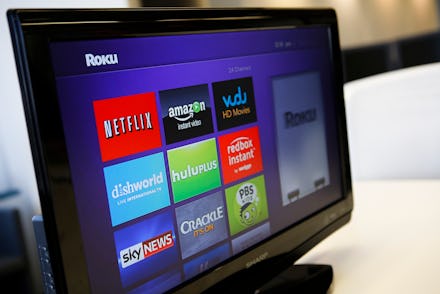The Surprising Cost of Watching All Your Shows Online

It's an oft-repeated presumption: Millennials are cutting the cord and leaving cable behind. There's data that backs it up: Approximately one in four TV-watching young people watches exclusively on streaming services, according to a ComScore survey. This is a chance for networks such as NBC, which announced this week a comedy streaming service set to launch at the end of the year, and CBS, which released its CBS All Access streaming service last October, to adapt to a changing customer base with online tendencies.
Individually, these options seem attractive — $9 dollars for Netflix here, $8 for Hulu there, a little more for the just-confirmed HBO Now. But what happens when you add up all these costs? Are audiences really saving money by cutting the cord?
Time for math. Let's assume one individual is paying for each service; there's no splitting costs with roommates or "borrowing" passwords from parents or friends. The services we'll be using can all be purchased a la carte, or will be available for individual subscription by the end of 2015. For all cable prices, we're using prices offered by Time Warner Cable. All prices listed are monthly.
The standard TV package, with the approximate number of programs you'd be getting with Hulu and CBS' and NBC's streaming services is $40. Add in TiVo, needed for recording the shows you can't watch live or while watching other shows, and you're paying $55 a month.
Conversely, if you pay for NBC's new streaming service, Hulu, CBS All Access, HBO Now's new a la carte option and Sling (a service from Dish that includes AMC, ESPN, CNN, Disney Channel and others), you'd be paying $54 a month. Case closed, right?
Wrong. Don't forget Netflix, which is releasing several new series this year. It's become a major hub for original content, and it's arguably necessary for the true cord-cutter experience. (Besides, in order to watch old shows, you'd need it because Hulu doesn't have them all.) Add Netflix into the bin, and you're up to $63. You may be getting the Netflix shows the cable user isn't, but you're paying more.
Now a harder question: Do you like Transparent? Or what about Mozart in the Jungle? If so, enjoy paying $99 annually for Amazon Prime. Since that's its own package deal, with extra benefits on the site's non-streaming sections, it won't factor into this equation. But it just goes to show how even an ideal cord-cutter life isn't a complete one.
Back to our math: With the $55 cable and TiVo plan, a traditional TV viewer is just missing the Netflix and Amazon Prime shows. Additionally, movies must be purchased on-demand, with the exception of films on channels like HBO and Showtime.
With the $63 cord-cutter plan, the modern user is missing NFL games (CBS All Access doesn't offer them), on-demand movies other than the ones on Netflix, plus live ABC. Say goodbye to tweeting along with Kerry Washington on #TGIT — until they come up with their own streaming subscription service, that is.
Each plan has its pluses and minuses, but neither is definitively better. And an $8-a-month difference isn't a huge one. But we forgot something in our math: What not-free service do you need to have to watch shows on streaming services?
Internet.
There's no package that includes both standard TV and Internet — each service on its own would add up to $75. If you wanted to expand into the preferred TV package, it would cost $90, but let's assume we're staying with the TV service we've used thus far. That brings the total cost with TiVo to $90.
Meanwhile, the cord-cutter will need slightly higher caliber Internet for all the streaming they're doing. Subscribing to the Ultimate 100 plan — described by Time Warner as "perfect for multiple devices ... streaming video" — costs $45 a month. Add that to the previous $63, and your total cost is $108 — $18 more a month, or $216 more a year.
A cord-cutter TV plan isn't necessarily cheaper than a traditional cable plan. In fact, it can be more expensive. But that's not to say there aren't benefits — there are customization options available within each plan. A cord-cutter doesn't have to sign up for every service. A traditional cable subscriber isn't prevented from signing up for Netflix. There are also benefits to each plan that can't be given monetary value: video on demand's more contemporary choices, or the luxury of flipping around the dial to find something new.
So the answer to "Which plan is better?" is simply that there is no concrete answer. It depends on the user.